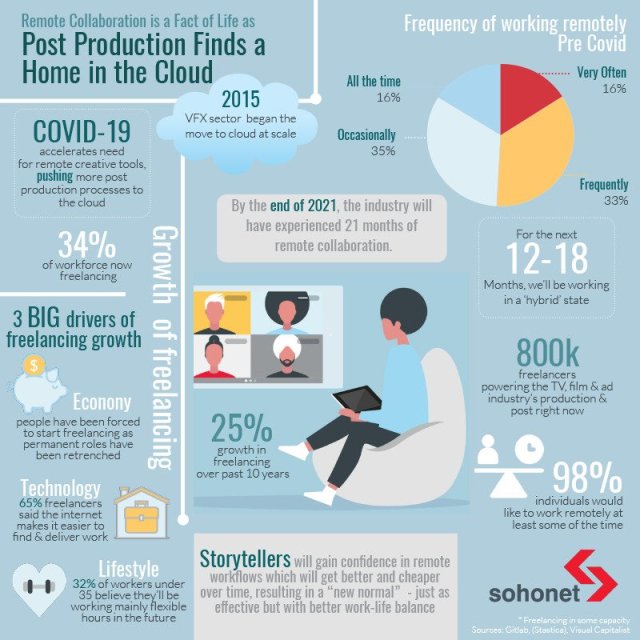“The collective scramble that our industry colleagues from Avid editors to VFX artists were forced to undertake in the early stages of the pandemic has given way to a universal acceptance and relatively standardized mode of remote working. With health and safety protocols likely to remain in effect for many months to come (and warnings that we’ll be social distancing and wearing masks well into 2022), it’s clear that we’ll be in a hybrid work scenario for some extended period of time. The practice of putting the customer into the darkened room while the artist drives the session remotely to preserve pandemic protocols is likely to work into our industry’s ‘muscle memory’ in 2021.”
Source: Chuck Parker, CEO, Sohonet
AT A GLANCE:
By the end of 2021, Sohonet CEO Chuck Parker notes in a post on the company blog, the industry will have experienced 21 months of remote collaboration. This trend will continue as people realize that remote collaboration tools not only solve practical issues inherent in content creation, but also help provide an improved quality of life for artists.
“The VFX industry began the move to cloud at scale in 2015, driving improved rendering costs and time efficiencies and introducing new workflows. In 2020, the pandemic kicked remote use cases for creative tools into overdrive, resulting in more post production processes moving to the cloud, boosting remote distributed collaboration,” Parker notes.
There are still two major hurdles for the industry to clear before cloud-based remote workflows can be considered the norm. One is the economic costs of hardware already deployed in facilities around the world, and Parker estimates that it will take an additional 18-30 months to arrive at a future where the majority of new purchases use a SaaS model versus the currently most common capital expenditure model.

The second major hurdle is solving the challenges of what Parker calls “critical review output,” which Parker defines as the “need to provide the same video and audio fidelity and ‘over the shoulder’ responsiveness that our industry demands of our in-suite experiences from the cloud delivered equivalent solutions.” The issue is especially complex “because video and audio fidelity requirements demand large streaming payloads which in turn create more challenges for latency and contention on the network.”
Head over to the Sohonet website to read the full story.





